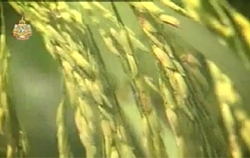BANGKOK, Aug 3 – The UN’s Food and Agriculture Organisation (FAO) reduced its April forecast of global paddy production in 2011 by 1.5 million tonnes to 718.3 million tonnes (478.9 million tonnes, milled). Still, world production will be 2.5 per cent over last year’s outcome, striking a new high.
Thailand is expected to especially benefit from increased exports, with world market price recovery mainly reacting to the growing likelihood of a reintroduced rice pledging programme at higher prices in Thailand, which could cut the country’s availabilities for export.

However, recent relaxation of export restrictions in India may boost that country’s deliveries. Australia, Argentina, Brazil, Cambodia, Uruguay and Viet Nam are also expected to ship more rice this year, but Egypt, Pakistan and the United States may export less.
Seasonal increases this year will occur due to a 1.5 per cent expansion of plantings to 164.7 million hectares and a 0.9 per cent gain of yields to 4.37 tonnes per hectare, said the July 2011 issue of FAO’s Rice Market Monitor, released today in Bangkok.
Monsoon rains are needed to achieve the target, but FAO’s outlook for production in Asia is favourable. Increased production in India a large part of an expected 2.5 percent expansion of output in the region, but larger crops are also expected in Bangladesh, China, Indonesia, Pakistan, Thailand and Viet Nam, while production may fall in Japan and Sri Lanka.
More production is expected in Africa with a 2 per cent expansion, while Central America and the Caribbean will grow 4 per cent, South American prospects have been raised, with recovery led by Brazil, but production may fall in Ecuador and Peru.
FAO sees 2011 world trade in rice growing by 1.4 million tonnes since April to 33.2 million tonnes (milled), showing larger than previously anticipated imports by Bangladesh, China, Indonesia, Iran and Nigeria, offsetting downward revisions in Colombia and the Philippines. Expanded export adjustments showed improved delivery prospects for Brazil, India, Thailand and Viet Nam, outweighing lower forecasts for China and the United States.
At 33.2 million tonnes, trade in rice will be 6 per cent larger than in 2010, passing the 2007 record. Anticipated growth will be mainly from more imports by Asian countries, many trying to rebuild stocks and stabilise domestic prices. Africa, Europe and North American countries are expected to buy more, but abundant crops in Latin America and the Caribbean may reduce deliveries to the region.
Pressure from new harvest secondary crops slightly depressed international rice prices in May, the FAO said, for a third consecutive month of decline. The downward price tendency reversed in June and remained positive in July.
In the coming months, international rice export prices will be influenced by the progress of the 2011 paddy season in northern hemisphere countries and, in particular, by the performance of the south-west monsoon in Asia. Policy actions by governments and exchange rate movements will also play a critical role.




